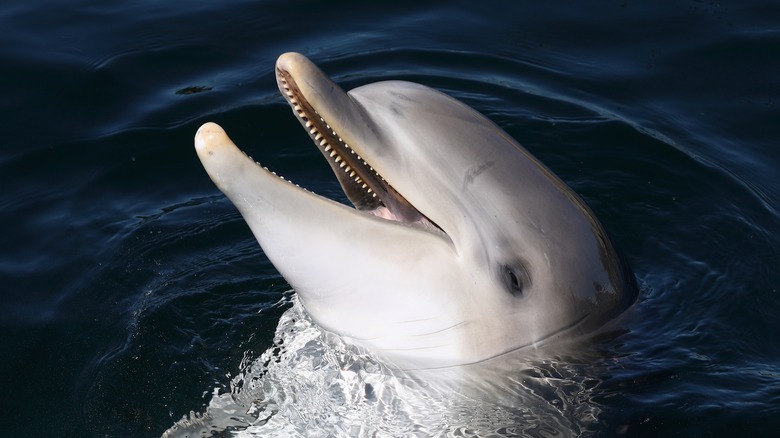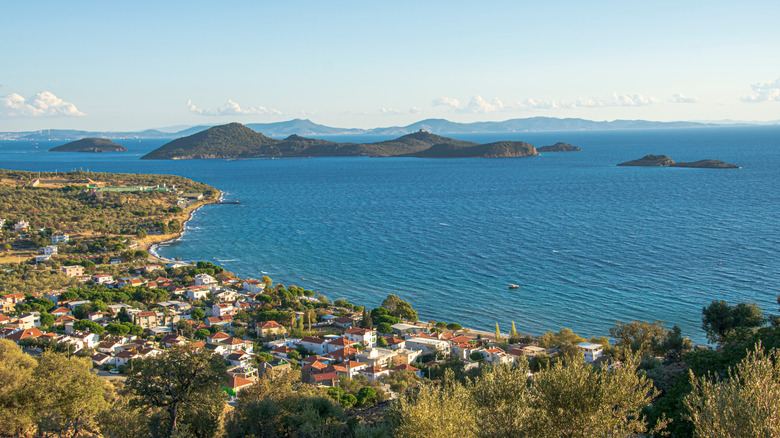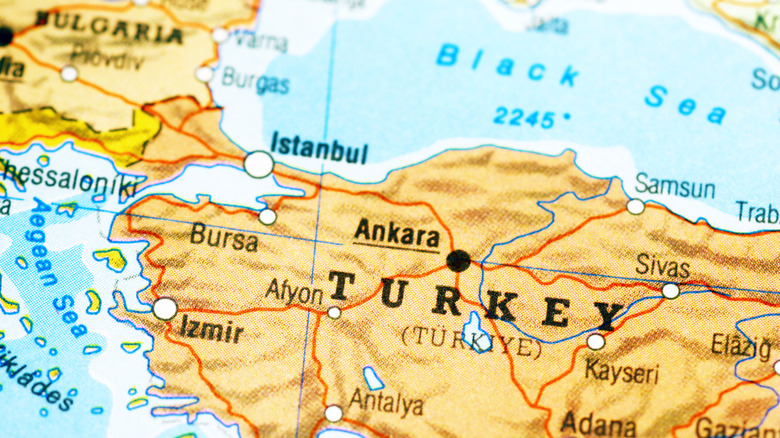The Two-Headed Dolphin Discovery In 2014 That's Unlike Anything You've Seen Before
Polycephaly, the characteristic of having two or more heads, is a rare occurrence in the animal kingdom. When identical twin embryos form in reptiles, amphibians, birds, and mammals, there is a small chance the cell division between them will be interrupted, resulting in the development of one offspring with more than one head, according to the Huron County Museum. This can be the result of chance, but environmental factors may also have an impact.
Such life can have a difficult time surviving. Two-headed calves, like the one preserved by the Huron County Museum, always have other health abnormalities and die soon after birth. A ladder snake with two heads expends too much energy and ignores potential predators nearby when the heads battle each other over who gets to devour prey (via National Geographic). Humans born with two heads on one torso (dicephalic parapagus) and other conjoined twins have a survival rate of just 7.5%, according to the National Institute of Health. Due to health problems, the majority of conjoined human twins are stillborn, and most live births don't survive past six months.
Given this, it was not surprising that a polycephalic dolphin found in Turkey in 2014 was no longer alive.
A Startling Discovery on Vacation
In the summer of 2014, a gym teacher vacationing on a Dikili beach in Turkey stumbled upon a deceased two-headed dolphin lying upon the sand (via TIME). "I couldn't take it in at first," said Tugrul Metin (via the Daily Mail). "I thought my eyes were playing tricks on me." HuffPost reported that one of the dolphin's eyes and one of its blowholes may have been underdeveloped, though this could have been an effect of decomposition. The photographs conjure a strange mix of scientific fascination, sympathy, and nightmare fuel.
Following the discovery, conflicting reports arose over whether the corpse was taken to a Turkish university for study. A marine biologist corrected the media, saying his institution did not have the remains but would, in fact, like to examine them if they could be found (via the Washington Examiner). There seemed to be some confusion as to what had been done with the dolphin. In reality, the authorities immediately buried the carcass. Then, two days later, it was dug up and taken to Istanbul for scientific analysis (via the Journal of the Black Sea/Mediterranean Environment).
The Cause of Death
Marine researchers determined that the dolphin was a newborn and likely did not survive because, given the positions of the blowholes, the twins could not surface and breathe at the same time (via the Journal of the Black Sea/Mediterranean Environment). Unlike many polycephalic creatures, this one was probably not stillborn. In a conference paper, the researchers revealed that the male dolphin had two hearts, two stomachs, two pairs of lungs, and other doubled organs.
The scientists also said this was only the second two-headed dolphin ever seen in the Mediterranean, with one documented in Corsica, France, in the early 2000s. The first case ever recorded of a dolphin with more than one head was in 1917 in the Netherlands, when a deceased female was discovered, according to Erwin J.O. Kompanje of the Naturalis Biodiversity Center. She was housed in museums and studied at universities but was lost in the bombings and chaos of World War II.


